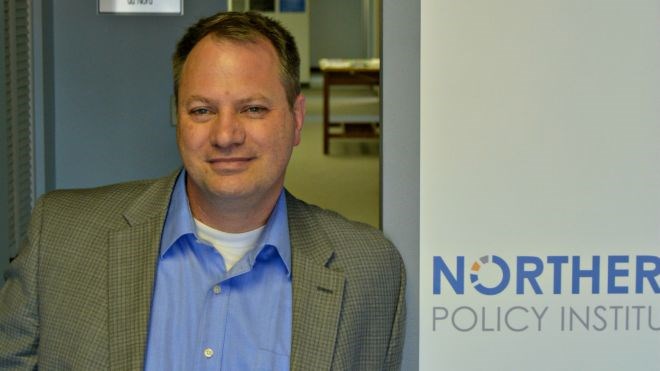Anyone thinking of making policy affecting Ontario’s Northern regions would be well served to get in a car and drive around the place for a few days, or even a few weeks, once every year or so. Now that I think about it, the next time I get that phone call asking, “If you were premier/prime minister, what is the one thing you would do to help Northern Ontario?” that will be my answer: put the deputy ministers on a bus and drive them around the North for meetings at least once every two years. Don’t fly them in; drive, and stop, regularly. Also, make sure the bus does not have free Wi-Fi – force them to depend on the cell coverage that the rest of us experience daily.
I just spent 10 days doing the Highway 17-11 loop. I learned a lot on this trip, as I always do when I travel around the North. I learned many things policymakers in Ottawa and at Queen’s Park should know. I can tell them (so can you), but learning it firsthand would, I think, have a greater impact. But, to start the ball rolling, here are a few of the observations I made in my latest effort to experience, just a little, Ontario’s diverse Northern regions:
First, Northern Ontario is NOT a single region. It is very much a group of regions, each with its own unique economic, geographic, and social challenges and opportunities. Making policy, or delivering programs, as if we are all one common area, is doomed to fail. That does not mean we don’t all face some challenges that are similar. It just means that addressing similar challenges will require differing responses in our various Northern regions. It also means each region has a few challenges and opportunities all its own.
Second, the number one policy priority in every Northern region is addressing the systemic social and economic challenges facing the Indigenous population. Where they are succeeding, personally, economically, and socially, Northern communities are growing. Where they are still struggling, the broader community struggles, too.
This is not a criticism, or even a call to action; progress is being made, quicker now than in the past. It is a call to continue these investments and this focus. To expand, wherever we can, efforts that are having a positive impact. Especially in the areas of economic opportunity and shared decision-making.
Third, some of Ontario’s Northern regions are growing, and much of that growth is due to newcomers, either from other parts of Canada or from abroad. Manitouwadge has seen a recent spike in home sales; the local perception is the buyers are generally older couples seeking an affordable lifestyle away from the daily grind of the Greater Toronto Area. Haileybury was playing host to a large group of Indian students at Northern College, and they were enthusiastically experiencing the local cuisine. I ran into a gentleman from Cameroon at the Robin’s Donuts in Longlac, and the workforce planning board in Hearst is pulling together a regional welcome package to help attract and settle newcomers across the northeast.
Finally, Ontario’s Northern regions are VERY LARGE. Transportation and communication infrastructure is lacking for an area of this size.
Anyone putting together a platform for the upcoming federal election should consider at least three key policy commitments for Ontario’s Northern regions: 100 per cent cell coverage on the “Queen’s highways” by the end of the next Parliament (so four years from now); 2+1 lane expansion on Highway 11 from North Bay to at least Beardmore over the next eight years; and a “travel increment” for every federal program delivered in the North.
It costs money to cover these distances and while online services should be more accessible, face-to-face delivery builds relationships, and relationships are key to program success in many areas (health, education, and workforce planning being just three).
Oh, by the way, it wouldn’t hurt for those “kids in short pants” writing today’s platforms and tomorrow’s policies to experience the North, too.
So, if you are hiring an intern or two this summer, include a few from outside the North. Send them home with a better understanding of your particular Northern region.



